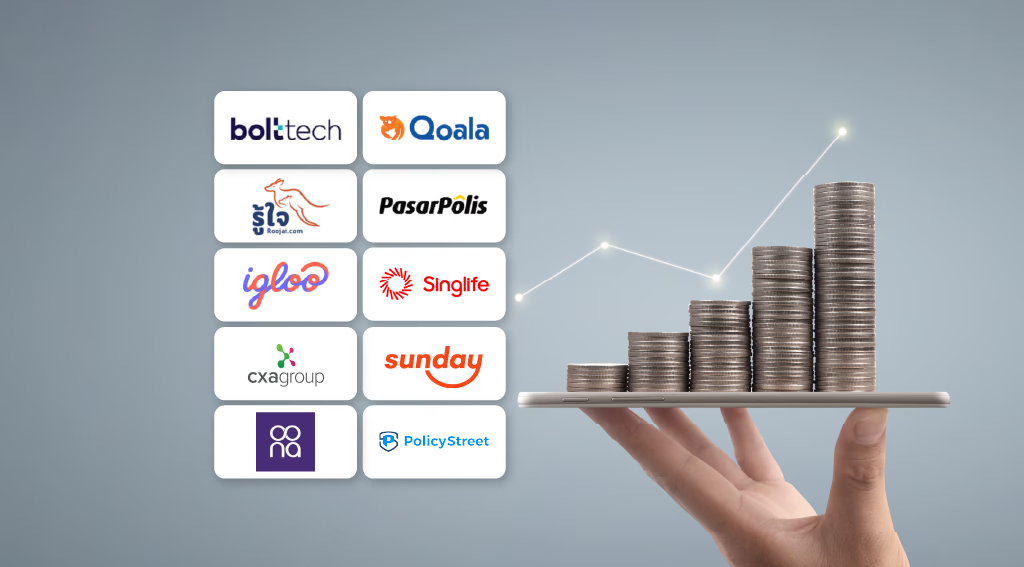Introduction
Southeast Asia has long been a region of economic dynamism and growth, with the Association of Southeast Asian Nations (ASEAN) serving as a driving force behind regional cooperation. In recent years, ASEAN has made significant strides in financial integration, aiming to create a more connected and cohesive financial system that enhances the region’s attractiveness to global investors. This article explores the progress of ASEAN’s financial integration initiatives, examines the benefits for cross-border investments within Southeast Asia, and delves into key opportunities in banking, insurance, and fintech sectors, as well as the challenges faced in harmonizing regulations and currencies across the region.
1. Progress in ASEAN Financial Integration Initiatives
Financial integration within ASEAN is a key element of the region’s broader economic integration agenda, which aims to foster greater trade, investment, and economic cooperation between member countries. Over the years, ASEAN has taken several steps to improve the region’s financial framework and facilitate cross-border financial activities.
One of the most significant milestones in ASEAN’s financial integration has been the establishment of the ASEAN Economic Community (AEC), which was officially launched in 2015. The AEC aims to create a single market and production base, making it easier for businesses and investors to operate across ASEAN member states. As part of this broader initiative, ASEAN has worked to improve the integration of its financial systems by enhancing capital market development, promoting cross-border investment, and harmonizing financial regulations.
The ASEAN Capital Market Forum (ACMF) and the ASEAN Insurance Regulators Meeting (AIRM) have been instrumental in advancing financial cooperation. Through these forums, ASEAN countries have developed a more standardized approach to financial regulations, making it easier for investors to access markets across the region. Additionally, the ASEAN Banking Integration Framework (ABIF) has created a roadmap for the integration of banking services, facilitating smoother cross-border banking operations.
2. Benefits for Cross-Border Investments within Southeast Asia
The financial integration of ASEAN presents numerous benefits for investors looking to tap into the region’s diverse and rapidly growing economies. The removal of barriers to cross-border investments is one of the most significant advantages. Investors can now access a broader range of markets and asset classes within the ASEAN region with greater ease, potentially diversifying their portfolios and reducing risks associated with concentrated investments in a single country.
For example, with the establishment of the ASEAN Exchanges, investors can access equity markets across multiple ASEAN nations through a single platform. This not only increases liquidity but also provides opportunities to invest in the region’s emerging markets, such as Indonesia, the Philippines, and Vietnam, which have seen significant growth in recent years.
In addition to the equity markets, ASEAN’s financial integration has also facilitated the growth of cross-border bond markets. The ASEAN+3 Bond Market Initiative (ABMI) has contributed to the development of regional bond markets, offering investors an expanded range of fixed-income investment options. The deepening of regional bond markets enables investors to gain exposure to ASEAN’s growing infrastructure projects and government-backed securities, which can offer attractive returns.
Moreover, ASEAN’s efforts to integrate its banking sectors have enhanced the availability of financing for businesses. Investors in private equity or venture capital have gained better access to financial services across borders, fostering a more favorable environment for investment in startups and high-growth companies within the region.

3. Key Opportunities in Banking, Insurance, and Fintech Sectors
The ASEAN financial integration initiatives have opened up a wealth of opportunities in key sectors such as banking, insurance, and fintech.
Banking
The ASEAN Banking Integration Framework (ABIF) has paved the way for the establishment of a more cohesive banking environment within the region. The initiative encourages the opening of local branches or subsidiaries by ASEAN banks in member countries, which facilitates the easier flow of capital, trade, and investment across borders. For investors, this means that there are more opportunities to invest in regional banking stocks, particularly in countries with underdeveloped banking systems that are likely to see growth as integration progresses.
Banks that operate across ASEAN countries can also benefit from economies of scale, leading to more efficient operations and greater profitability. The increasing demand for banking services across Southeast Asia, especially in emerging markets, offers significant growth potential for investors in the sector.
Insurance
The insurance sector has also seen notable developments, with ASEAN’s efforts to harmonize regulations and promote cross-border operations enabling greater integration. The ASEAN Insurance Regulators Meeting (AIRM) has worked to create a more unified regulatory framework, which has made it easier for insurance companies to expand their operations within the region.
For investors, the insurance market in ASEAN presents significant opportunities, particularly in the context of the region’s growing middle class. As incomes rise and wealth accumulates, there is an increasing demand for health, life, and property insurance products. The regional insurance market is expected to continue its expansion, with countries like Indonesia, the Philippines, and Thailand experiencing rapid growth in insurance penetration.
Fintech
The fintech sector has emerged as one of the most dynamic areas of growth within ASEAN, benefiting from financial integration and increased investment. ASEAN governments have embraced digital financial services, including mobile payments, digital lending, and insurtech, leading to the rapid expansion of fintech startups. The integration of digital banking services across borders has facilitated the growth of cross-border payments, offering both opportunities and challenges for investors.
Fintech investors have benefited from the regulatory push toward creating more streamlined processes for cross-border payments and digital wallets. The proliferation of fintech companies has also driven innovation in the payments sector, with Southeast Asia becoming a global leader in mobile payment adoption. Investors in fintech companies can capitalize on the growing demand for digital financial services, particularly in markets such as Singapore, Malaysia, and Vietnam.
4. Challenges in Harmonizing Regulations and Currencies
Despite the promising progress in financial integration, ASEAN still faces several challenges, particularly in harmonizing regulations and currencies across the region.
Regulatory Harmonization
While ASEAN countries have made strides toward standardizing financial regulations, there are still significant differences in the regulatory frameworks of individual member states. These discrepancies can create barriers to cross-border investments and may require additional legal and administrative steps for investors. The lack of uniformity in accounting standards, tax policies, and financial reporting procedures can also complicate investments in the region.
Efforts to standardize regulations are ongoing, with initiatives such as the ASEAN Framework Agreement on Services and the ASEAN Capital Markets Forum working to address these issues. However, full regulatory harmonization will likely take time, and investors must navigate a complex and sometimes fragmented regulatory environment.
Currency Issues
Another challenge in ASEAN’s financial integration is the lack of a single currency. While the Eurozone benefits from a shared currency, the ASEAN region continues to use national currencies, which can create exchange rate volatility and additional risks for cross-border investments. Currency fluctuations can affect the profitability of investments, particularly in the case of foreign direct investments or cross-border loans.
The ASEAN Economic Community does have a goal of promoting greater currency stability and cooperation, but achieving a common currency is not currently on the horizon. Investors must therefore consider currency risks when investing in ASEAN markets and explore options such as currency hedging to mitigate these risks.
Conclusion
ASEAN’s financial integration is opening up new opportunities for investors looking to diversify their portfolios and tap into the region’s dynamic growth. With significant progress in the banking, insurance, and fintech sectors, investors have an increasing array of options to consider. However, challenges such as regulatory differences and currency volatility remain, and navigating the complexities of ASEAN’s diverse markets will require careful consideration and expertise. As ASEAN continues to advance its financial integration efforts, the region is poised to become a key player in the global financial landscape.
Tags:
ASEAN financial integration, cross-border investments, ASEAN banking, fintech opportunities, ASEAN insurance, regional market growth, Southeast Asia investment, financial regulation, currency challenges, ASEAN Economic Community





























